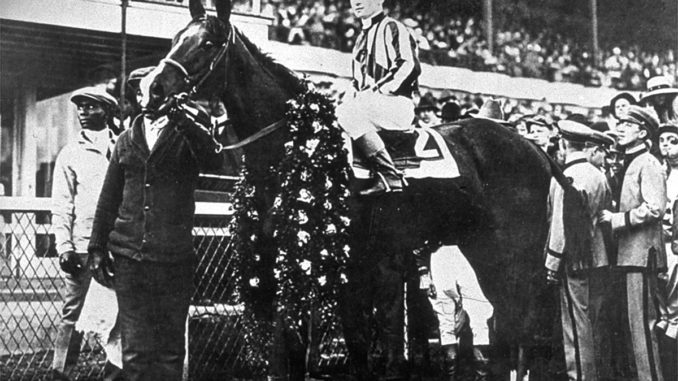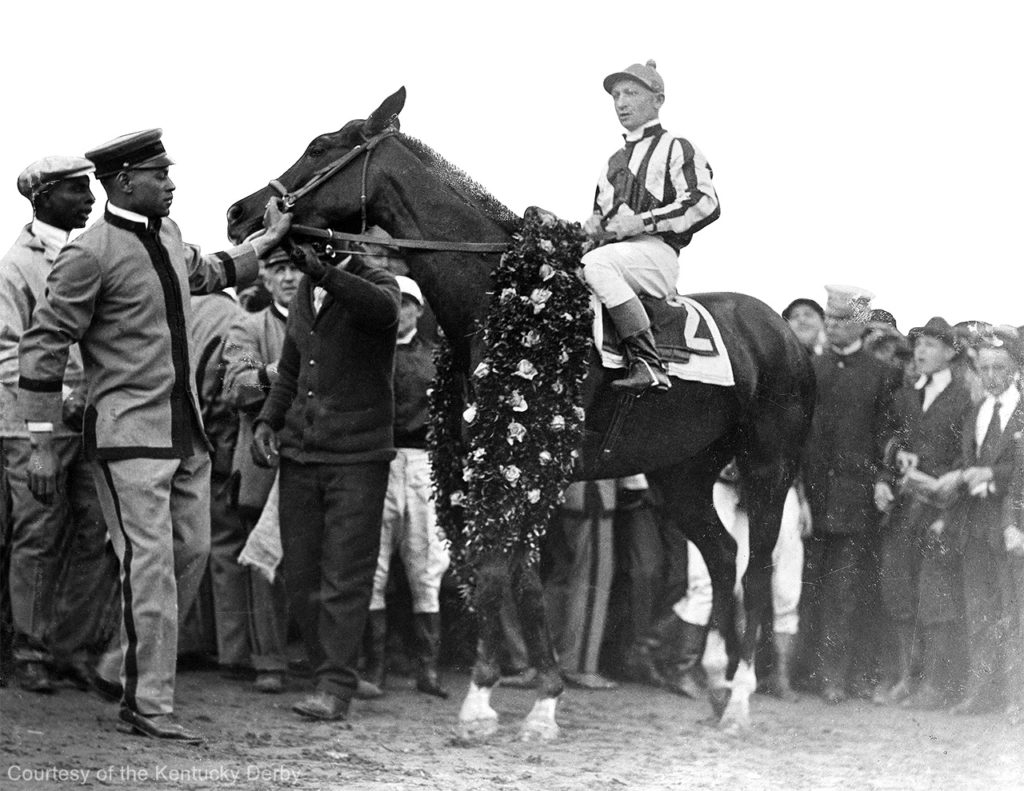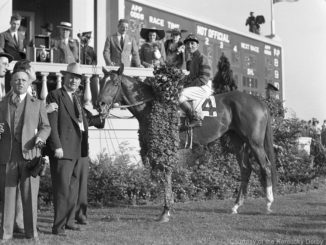
The centennial race that ran without the year’s best 3-year-old in the land.
While 2019 marked the 100th anniversary of the first American Triple Crown sweep by Sir Barton, this year marks the centennial of the 3-year-old campaign that propelled Man o’ War from budding legend to an immortal of the American turf.
As is well known, Man o’ War’s historic season did not include a trip to Churchill Downs for the Kentucky Derby.
Owner Samuel D. Riddle’s ingrained biases against the race (set aside only once with War Admiral in 1937) undoubtedly prevented “Big Red” from achieving the same distinction that Sir Barton had a year earlier.
But the show went on.
The 1920 edition of the Kentucky Derby held on May 8 was the 46th and carried a gross purse of $36,650, higher than all but one race Man o’ War competed in that season (his Kenilworth Park Gold Cup match against Sir Barton was worth $75,000).
History is replete with examples of the 3-year-old of the year either not winning or, more rarely, not running in the Kentucky Derby. In that respect the 1920 renewal was not unique. Nonetheless, there’s still plenty to admire about the field that was assembled.

Favored at 8-5 in the then-record field of 17 was the Harry Payne Whitney-owned entry of Upset, Damask, and Wildair. Upset, of course, had famously handed Man o’ War his only lifetime defeat the previous summer in the Sanford Memorial at Saratoga. Damask captured the Louisiana Derby before finishing third to Peace Pennant in the Blue Grass Stakes, while Wildair had beaten none other than Sir Barton in his final pre-Derby start at Havre de Grace.
Second choice in the wagering at 4-1 was the entry of On Watch and the French-bred Donnacona. On Watch had been one of the better 2-year-olds of 1919 not named Man o’ War, while Donnacona, with a relatively light five races under his belt, had recently run a close second in the Blue Grass.
Dismissed at 16-1 was another entry consisting of Blazes and Paul Jones. Blazes had been widely judged second in the pecking order of juvenile males behind Man o’ War, though his stock lost a bit of luster when he finished fourth in the Chesapeake Stakes at Havre de Grace behind longshot Sandy Beal, Paul Jones, and Wildair.
Paul Jones, a gelding, was the product of John E. Madden’s famed Hamburg Place nursery in Lexington. A lower-level juvenile judged on his sixth-place finish in the Futurity in his only previous attempt against Man o’ War, his form had shown a noticeable upswing at three, punctuated by his good run in the Chesapeake.
Wet weather had turned the track slow for Derby Day, but that proved a blessing for Paul Jones, who had won four times previously on off tracks. Sent to the front by jockey Ted Rice, Paul Jones proceeded to set fractions of :23 4/5, :48 1/5, 1:14 4/5, and 1:42.
Challenged by Upset inside the final furlong, Paul Jones dug in and repelled the favorite by a head in a time of 2:09 for the 1 1/4 miles. On Watch was four lengths behind in third. Trained by William Garth, Paul Jones paid $34.40.
10 Days AFTER the Kentucky Derby…
Ten days after the Derby Man o’ War made his season debut in the Preakness, beating Upset, Wildair, Donnacona, Blazes, and On Watch. Paul Jones didn’t contest the Belmont Stakes either, in which Man o’ War was left to beat only Donnacona by a lopsided 20 lengths.
Paul Jones’ last significant victory was in the Suburban Handicap that summer. Carrying a mere 106 pounds, Paul Jones beat none other than “Old Bones,” the Hall of Fame gelding Exterminator. The 1918 Kentucky Derby winner conceded his younger rival 17 pounds.
While the 1920 Kentucky Derby will forever be remembered for not attracting the season’s best colt in Man o’ War, the leading 3-year-old filly happened to be an also-ran in the field. Cleopatra rebounded from her 15th-place effort in the Derby to win the Pimlico Oaks, Coaching Club American Oaks, Alabama, and Latonia Championship.
Cleopatra later became a broodmare of some distinction, rearing 1925’s top juvenile colt Pompey and the stakes-winning Caesarion, by Man o’ War. Cleopatra was also the third dam of Broodmare of the Year Gaga, who reared Hall of Famer Tom Fool and juvenile filly champion Aunt Jinny.


